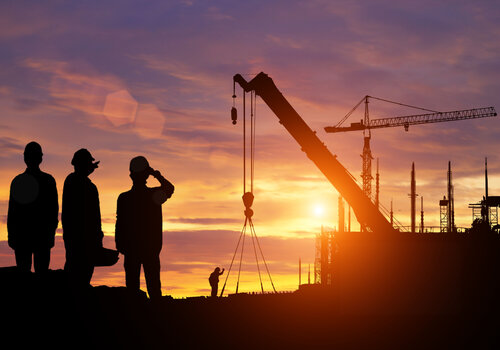Community engagement is an often overlooked yet critical aspect of construction projects. For industry professionals, fostering strong relationships with the communities where projects are based isn't just a public relations exercise—it’s a strategic approach that can drive project success, reduce delays and enhance long-term reputations. Here’s why community engagement matters and how construction professionals can adopt it effectively.
WHY COMMUNITY ENGAGEMENT MATTERS
1. Mitigates Opposition and Delays
Community opposition is one of the leading causes of project delays. Early and transparent communication can address concerns, reduce resistance and build public support. Engaging local stakeholders from the outset creates an opportunity to incorporate feedback and anticipate challenges before they escalate.
2. Enhances Reputation and Trust
A construction company that actively involves the community is perceived as invested in the people it serves. This goodwill can translate into future projects and partnerships. Communities value companies that listen and demonstrate accountability.
3. Promotes Sustainability and Local Benefits
By engaging with the community, construction projects can better align with local priorities, such as sustainability, traffic concerns or preserving cultural landmarks. Additionally, hiring local workers and sourcing materials locally can further endear a project to its host community.
4. Improves Safety and Compliance
Local input can uncover potential safety or environmental issues that professionals might overlook. Community members often have insights about historical challenges, such as flood-prone areas or traffic patterns, that can inform safer, more compliant project designs.
EFFECTIVE COMMUNITY ENGAGEMENT STRATEGIES
1. Start Early
Engage with local leaders, residents and businesses during the planning phase. Share project details, timelines and potential impacts. Early communication signals respect and a willingness to collaborate.
2. Hold Community Meetings
Hosting forums for public discussion allows stakeholders to voice concerns and ask questions. These meetings demonstrate transparency and create a platform for shared problem-solving.
3. Leverage Technology
Use digital tools like project websites, social media updates and virtual town halls to keep the community informed. Interactive platforms can reach a broader audience and maintain engagement throughout the project lifecycle.
4. Offer Education and Job Opportunities
Partner with local schools and training programs to educate the community about construction careers. Offering apprenticeships or temporary jobs for local residents can turn a potential source of criticism into a pool of advocates.
5. Create Feedback Loops
Make it easy for community members to share their thoughts and ensure their feedback is considered. Dedicated project liaisons or hotlines can provide accessible channels for communication.
EXAMPLES OF SUCCESSFUL COMMUNITY ENGAGEMENT
- Community-Driven Design in Infrastructure: Urban development projects can work with members of the community to be involved in the process. Providing workshops about designing these spaces get neighbors involved and invested, potentially reducing any pushback from the community.
- Cultural Engagement in Indigenous Areas: Indigenous communities can provide information about how to incorporate cultural and environmental considerations. By creating a joint advisory council, sacred lands can be preserved and offer training programs to Indigenous workers, fostering a more collaborative approach.
- Local Hiring Initiatives: Projects, especially megaprojects, need a lot of hands on deck, so hiring from within the community can be a bridge. This can reduce costs but also foster goodwill, ensuring smooth project execution.
- Revitalizing a Historic Neighborhood: Local historians, preservation groups and residents want to make sure any new designs respect the area’s architectural heritage. By incorporating community ideas into the final design, the project can restore historic charm but also increase tourism and property values.
- School Partnership for STEM Education: Engineers can give guest lectures and students can visit the site to learn about structural design and project management. These kinds of initiatives can spark student interest in engineering careers and create a legacy of educational impact for the community.
- Environmental Restoration and Recreation: Construction teams can partner with local environmental groups to restore nearby wetlands and create walking trails. A dual focus on infrastructure and recreation can help shift public perception, turning skeptics into advocates.
- Addressing Traffic Concerns with Real-Time Updates: Construction companies can implement apps to provide real-time updates on road closures, detours and progress timelines. This proactive approach can minimize traffic disruptions, keep commuters informed and earn praise from local businesses for reducing the impact on their operations.
- Affordable Housing Collaboration: Construction teams can collaborate with local nonprofits to include affordable housing units by hosting workshops to gather input from low-income residents, ensuring the units meet community needs. This commitment to inclusivity enhances a project’s reputation and demonstrates the construction company’s dedication to social responsibility.
- Emergency Relief: Following a natural disaster, construction companies can work with residents to expedite portions of the project. You can provide temporary medical facilities and hire local tradespeople affected by the disaster. This responsiveness earns trust and gratitude, enhancing the company’s community-focused reputation.
Community engagement isn’t an optional component of modern construction; it’s an essential practice. By fostering open communication, prioritizing local needs and demonstrating a commitment to mutual benefit, construction professionals can build more than just physical structures—they can build trust, collaboration and lasting community relationships.
Photo credit: RAWPIXEL.COM/BIGSTOCKPHOTO.COM












